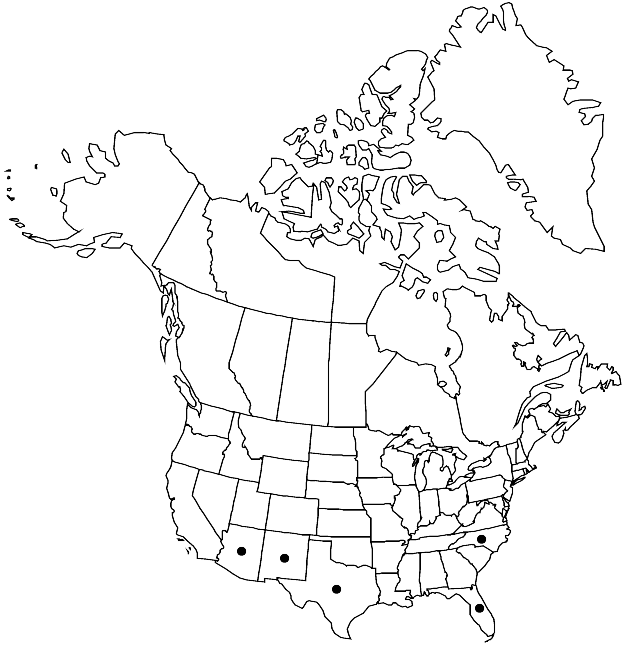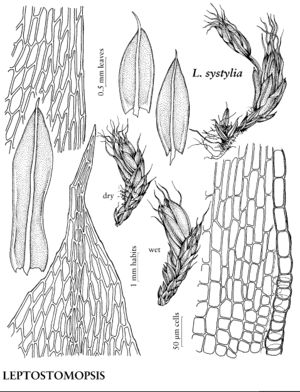Leptostomopsis systylia
Phytologia 87: 70. 2005.
Plants in dense cushions or turfs, green-silver to pink-silver. Stems 0.4–2 cm. Leaves erect when moist, spathulate to somewhat elongate-ovate, concave, 0.3–2 mm; margins serrulate to serrate near apex, limbidium absent; apex broadly rounded to acute, not hyaline; costa percurrent in proximal leaves to long-excurrent in distal leaves, awn pigmented proximally, hyaline distally, weakly to strongly recurved when dry; distal laminal cells green, hexagonal to rhomboidal, 40–60 µm, 3–4+:1, walls not thick or sinuate. [Capsule cylindric, 2–4 mm; hypophysis well differentiated, somewhat expanded and rugose. Spores 17–25 µm].
Habitat: Tree trunks, especially Quercus, rock, soil
Elevation: low to high elevations (0-2000 m)
Distribution

Ariz., Fla., N.Mex., N.C., Tex., Mexico, Central America, South America, Asia (India, Java), Africa.
Discussion
The shiny pale yellow-green to pink-tinged plants of Leptostomopsis systylia are found primarily on tree trunks. This pantropical to subtropical species is much more common and widespread than L. nivea, and the two can be readily distinguished by laminal cell differences.
Selected References
None.
